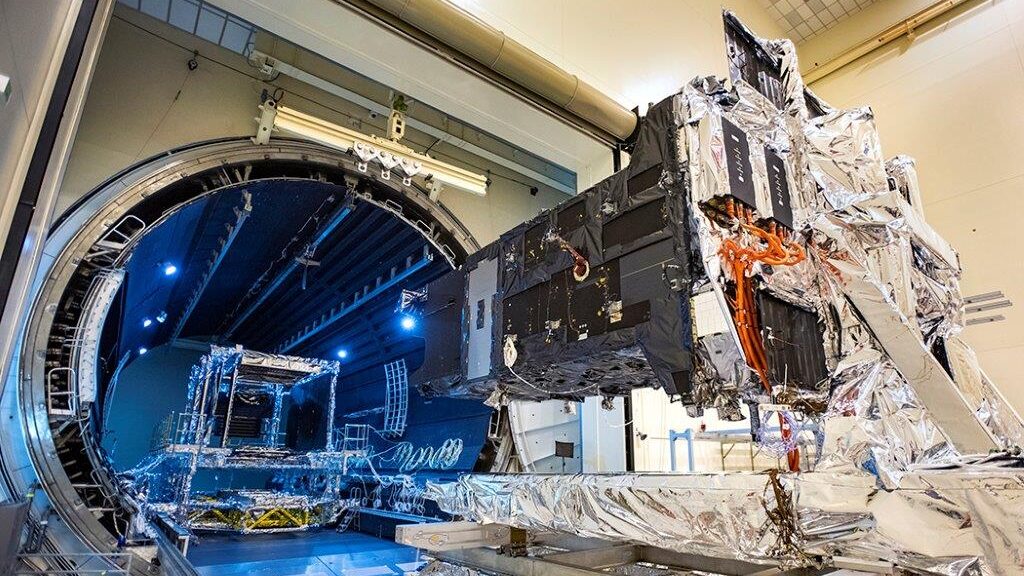
Will systems like the SBIRS (Space Based Infra-Red System) satellite be easier to procure in the future? (File)
WASHINGTON: Perhaps the biggest focus of America’s space reorganization push of the last few years has been to try and get the famously slow-moving space acquisition community consolidated into a more logical setup, versus the balkanized office structure that was previously spread across multiple services and agencies.
How effective that has been seems very much up for debate. Congress has expressed concern the reorg has not happened quickly enough, and Air Force Secretary Frank Kendall continues to tinker with the layout.
But respondents to the first ever Breaking Defense Space Survey, at least, see reasons for some optimism.
RELATED: Cyber Concerns, Classification Disagreements Lead Space Survey Results
The largest cohort of respondents, 37%, reported that the Space Force has been “moderately effective” at improving space acquisition, with 29% saying it has been “slightly effective,” and 11% “very effective.”
Notably, while almost 20% of overall respondents believe that the Space Force is not effective “at all” at improving space acquisition, there is a major split between views of DoD and industry; just 4% of DoD respondents said Space Force hasn’t helped, while 23% of industry respondents held that view.
RELATED: Full Coverage Of The Breaking Defense Space Survey
To Brian Weeden, head of program planning at the Secure World Foundation, the Space Force’s impact on acquisition has been “minimal.” However, Weeden said he’s not surprised there is a split between views inside and outside the building.
“I think it’s harder for those inside the Space Force to step back and honestly evaluate its progress to date given the intense pressure to have it be seen as successful,” he said.
Justin Johnson, who was involved in discussions around the creation of the Space Force while at the Pentagon during the Trump administration, agreed that the newest service “still isn’t move fast enough” to accelerate space capabilities. “The numbers from industry are consistent with perspectives I hear, particularly from the newer and more innovative parts of the space industry,” he said.
Another part of the acquisition reorganization was the creation of the Space Development Agency. A stand-alone office reporting up to the undersecretary of defense for research and engineering, from the start there have been questions about why SDA is not part of the Space Force or under the Department of the Air Force’s acquisition community.
Kendall has recently made moves to speed up the SDA’s transfer to the DAF, and he’s likely to find support, based on respondents to the poll. The largest group of respondents, 42%, reported that the Space Development Agency should live under the Space Force; 32% feel SDA should continue to operate independently, with 25% saying they aren’t sure. The number supporting SDA’s merger into the Space Force jumps to 47% when polling just defense officials, showing a plurality of support for SDA to no longer exist as an independent entity.
Johnson noted that the idea was always for SDA to eventually move into Space Force, and said that while the agency “hasn’t been perfect,” it’s moving faster than almost anywhere else in the space enterprise. “So the question is whether pulling SDA into the Space Force can achieve more unity of effort without squashing the energy and momentum that SDA is bringing.”
Weeden agrees that bringing SDA inside the Space Force comes with some risks of lost ideas.
“If the goal is to harmonize and consolidate defense space acquisitions, then I’m not surprised at the push to bring SDA back into the fold,” said Weeden. “However, it was originally created because there was too much resistance inside Air Force Space Command to changing the way acquisition was done, and if it is brought back into the Space Force, I think there’s a good chance the new approach the SDA has developed could be lost.”
Keep an eye on Breaking Defense for the next few weeks as we roll out further findings from the space survey.






















